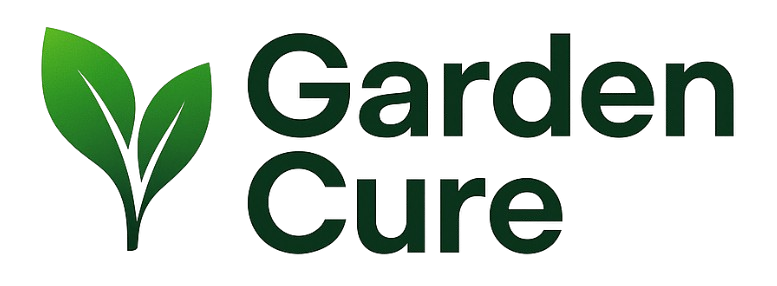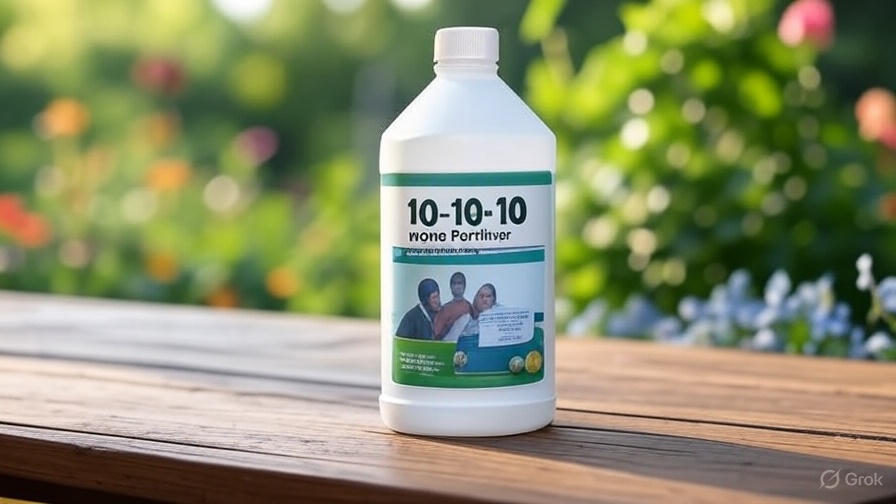5 Best 10-10-10 Liquid Fertilizer In 2025
Liquid fertilizers transform ordinary gardens into thriving ecosystems. The 10-10-10 NPK ratio provides balanced nutrition that plants crave for optimal growth, vibrant blooms, and bountiful harvests. This comprehensive review examines the top five liquid fertilizers available today, helping gardeners make informed decisions for their growing needs.
What Makes 10-10-10 Liquid Fertilizer Special?
The 10-10-10 formulation delivers equal parts nitrogen, phosphorus, and potassium – three essential macronutrients plants require for healthy development. Nitrogen promotes lush green foliage and vigorous growth. Phosphorus strengthens root systems and enhances flower production. Potassium improves disease resistance and overall plant health.
Liquid fertilizers offer distinct advantages over granular alternatives. Plants absorb nutrients faster through liquid applications, delivering results within days rather than weeks. The concentrated formulas mix easily with water, ensuring even distribution across garden beds, containers, and lawns.
Professional growers and home gardeners alike praise liquid fertilizers for their versatility. These products work effectively on indoor houseplants, outdoor vegetable gardens, flowering annuals, and established lawns. The balanced NPK ratio eliminates guesswork, providing comprehensive nutrition without the risk of over-fertilizing specific nutrients.
Top 5 Best 10-10-10 Liquid Fertilizers Reviewed
1. Triple 10 All Purpose Liquid Fertilizer with Amino Acids & Seaweed Extract (32oz)
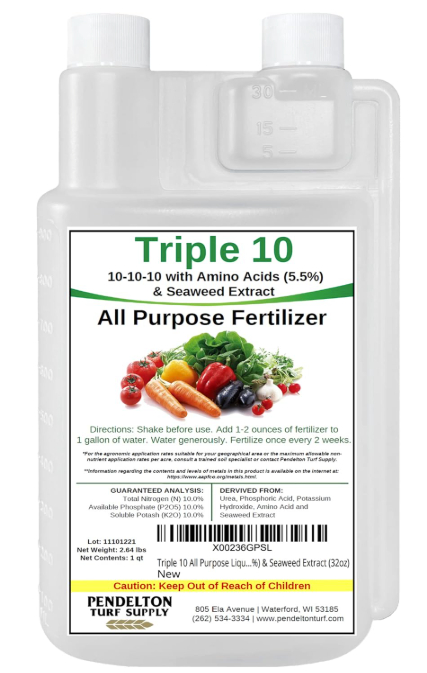
This premium liquid fertilizer stands out with its unique blend of amino acids and seaweed extract. The 32-ounce concentrated formula provides exceptional value for extensive garden applications.
Key Features:
- Enhanced with 5.5% amino acids for improved nutrient uptake
- Contains natural seaweed extract for micronutrient supplementation
- Concentrated formula covers large growing areas
- Suitable for all plant types and growing conditions
- Fast-acting liquid formulation shows results quickly
The amino acid enhancement sets this fertilizer apart from standard 10-10-10 formulations. These organic compounds act as natural chelators, helping plants absorb and utilize nutrients more efficiently. Gardeners report noticeable improvements in plant vigor and growth rates within the first application.
Seaweed extract provides additional micronutrients often missing from synthetic fertilizers. This natural supplement contains trace elements like iron, manganese, and zinc that support healthy chlorophyll production and enzyme function. The combination creates a complete nutrition package for demanding plants.
Professional landscapers appreciate the concentrated nature of this product. A small amount goes a long way, making it cost-effective for commercial applications and large residential properties. The liquid format ensures consistent mixing and application across diverse plant collections.
Pros:
- Amino acids boost nutrient absorption efficiency
- Seaweed extract adds valuable micronutrients
- Generous 32oz size offers excellent value
- Works effectively on indoor and outdoor plants
- Professional-grade formulation delivers consistent results
Cons:
- Premium ingredients command higher price point
- Concentrated formula requires careful dilution
- Large size may be excessive for small gardens
2. Covington 10-10-10 NPK Liquid Fertilizer (32oz)
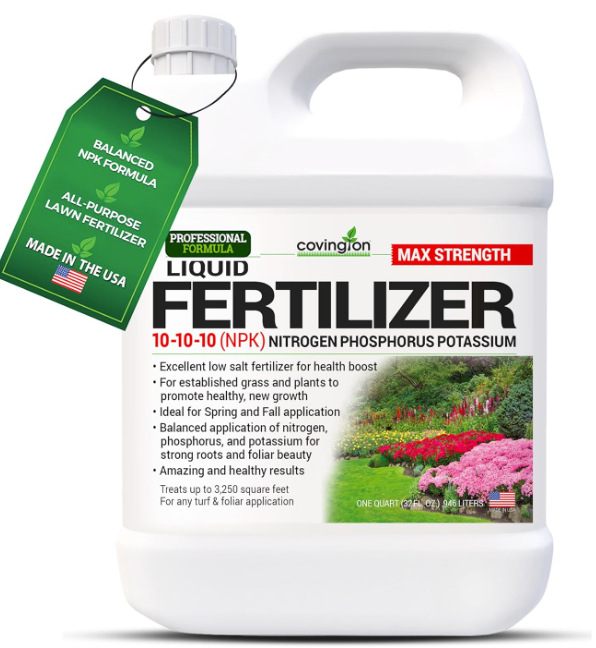
Covington delivers a straightforward, no-nonsense approach to plant nutrition. This all-purpose liquid fertilizer focuses on providing clean NPK nutrition without additional additives or complexity.
Key Features:
- Pure 10-10-10 NPK formulation without fillers
- 32-ounce concentrate bottle for extended use
- Compatible with all plant types and growth stages
- Easy-mix liquid formula dissolves completely
- Affordable pricing makes regular feeding accessible
The simplicity of this fertilizer appeals to gardeners who prefer basic nutrition without premium additives. The clean formulation eliminates potential reactions or sensitivities that some plants exhibit with complex blends. This makes it an excellent choice for sensitive plants or organic growing systems.
Budget-conscious gardeners appreciate the competitive pricing without sacrificing quality. The 32-ounce size provides months of regular feeding for average-sized gardens. The liquid concentrate mixes easily with standard garden sprayers and watering systems.
Lawn care enthusiasts particularly favor this product for its consistent grass feeding results. The balanced NPK ratio promotes even green color without excessive growth spurts that require frequent mowing. The liquid application ensures thorough soil penetration and root zone feeding.
Pros:
- Clean, simple formulation eliminates complications
- Excellent value pricing for budget-conscious gardeners
- Large 32oz size lasts through entire growing seasons
- Compatible with organic growing practices
- Reliable results across diverse plant types
Cons:
- Lacks premium additives found in enhanced formulas
- Basic formulation may not address specific deficiencies
- No micronutrient supplementation included
3. Bonide Houseplant Liquid Plant Food 10-10-10 (8oz)

Bonide specializes in indoor plant nutrition with this compact, concentrated formula designed specifically for houseplant care. The 8-ounce size perfectly suits indoor gardening needs without waste or storage concerns.
Key Features:
- Specifically formulated for indoor houseplant care
- Concentrated 8oz bottle ideal for container growing
- Safe for regular use with every watering session
- Gentle formula prevents root burn and leaf damage
- Trusted brand with decades of gardening experience
Indoor plant enthusiasts appreciate the convenience and safety of this specialized formula. The concentration allows for easy dilution in small watering containers typically used for houseplant care. The gentle formulation prevents the salt buildup that often occurs with stronger fertilizers in container environments.
The “feed every time you water” approach simplifies houseplant care routines. This consistent, low-dose feeding method maintains steady nutrition levels without the feast-or-famine cycles that stress container plants. Many indoor gardeners report improved plant health and reduced fertilizer-related problems.
Bonide’s reputation for quality control ensures consistent product performance. The company’s focus on home gardener needs results in user-friendly packaging and clear application instructions that beginners can follow successfully.
Pros:
- Perfect size for indoor plant collections
- Gentle formula safe for frequent applications
- Simplifies houseplant feeding routines
- Prevents common container growing problems
- Trusted brand with proven track record
Cons:
- Small 8oz size insufficient for outdoor gardens
- Higher per-ounce cost compared to larger containers
- Limited to indoor plant applications
4. All Purpose Plant Food Liquid Fertilizer with Seaweed Kelp & Iron (8oz)
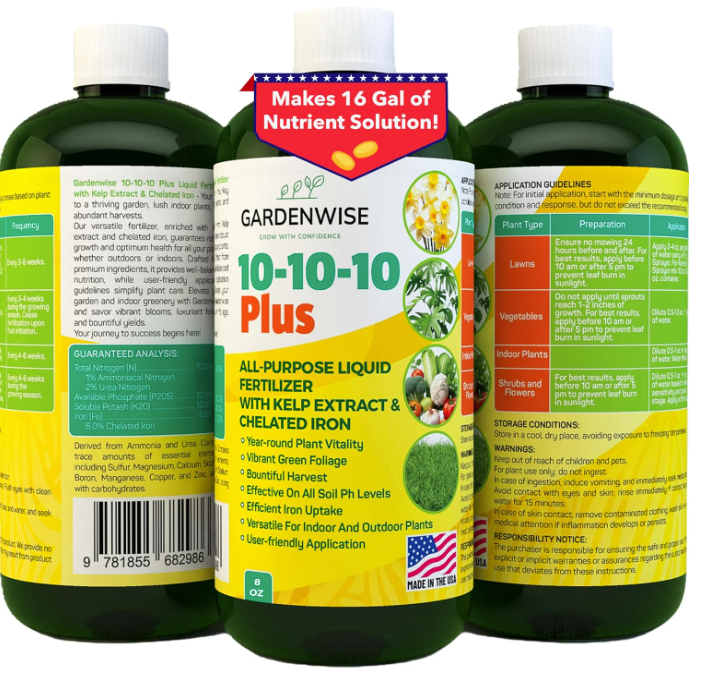
This compact fertilizer packs powerful nutrition into a convenient 8-ounce container. The addition of seaweed kelp and iron addresses common nutrient deficiencies while maintaining the balanced 10-10-10 foundation.
Key Features:
- Enhanced with natural seaweed kelp for micronutrients
- Iron supplementation prevents chlorosis and yellowing
- Suitable for indoor and outdoor plant applications
- Concentrated formula provides excellent coverage
- Natural additives support organic growing practices
Iron deficiency ranks among the most common plant nutrition problems, particularly in alkaline soils and container growing situations. The iron supplementation in this formula addresses this issue directly, preventing the yellow leaves and poor growth associated with iron chlorosis.
Seaweed kelp provides a natural source of trace elements rarely found in synthetic fertilizers. These micronutrients support enzyme function, photosynthesis efficiency, and disease resistance. Organic gardeners particularly appreciate these natural enhancements to the basic NPK formulation.
The 8-ounce size suits both indoor plant care and small outdoor gardens. The concentrated nature means a little goes a long way, making it economical despite the smaller container size. The liquid format ensures complete mixing and even distribution.
Pros:
- Iron supplementation prevents common deficiency problems
- Seaweed kelp adds valuable natural micronutrients
- Works effectively indoors and outdoors
- Concentrated formula offers good value
- Natural additives appeal to organic gardeners
Cons:
- Small container size limits large-scale applications
- May be overpowered for very sensitive plants
- Iron content may stain concrete or light-colored surfaces
5. TPS NUTRIENTS Liquid 10-10-10 Fertilizer for Vegetables (32oz)
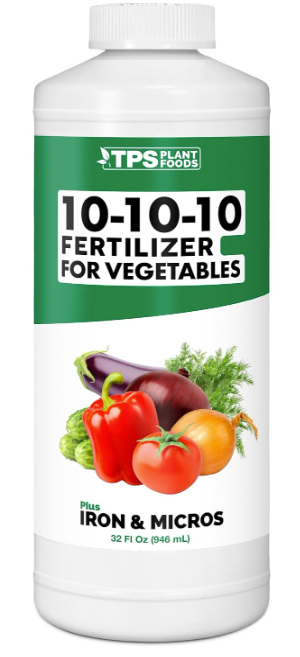
TPS NUTRIENTS targets vegetable gardeners with this specialized formula designed for edible crop production. The addition of iron and micronutrients addresses the specific needs of food plants throughout their growing cycle.
Key Features:
- Specifically formulated for vegetable garden applications
- Enhanced with iron and essential micronutrients
- 32-ounce concentrate provides season-long feeding
- Triple ten NPK ratio supports all growth stages
- Professional-grade formulation for serious gardeners
Vegetable gardeners face unique challenges in maintaining consistent plant nutrition throughout long growing seasons. This formula addresses those needs with a carefully balanced blend that supports seedling establishment, vegetative growth, and fruit production phases.
The micronutrient package includes elements specifically important for edible crops. These additions support fruit development, improve flavor profiles, and enhance nutritional content in harvested vegetables. Many users report improved crop yields and quality compared to basic fertilizer applications.
Professional vegetable growers appreciate the consistency and reliability of this product. The liquid format allows for precise application timing and concentration adjustment based on plant growth stages. The 32-ounce size accommodates extensive vegetable gardens without frequent repurchasing.
Pros:
- Specifically designed for vegetable garden needs
- Micronutrient package enhances crop quality and yield
- Large 32oz size serves extensive growing operations
- Professional formulation ensures consistent results
- Supports plants through all growth phases
Cons:
- Specialized formulation may be overkill for ornamental plants
- Higher cost reflects premium micronutrient additions
- Complex formula requires careful application timing
Application Guide: Getting the Most from Your Liquid Fertilizer
Proper application techniques maximize fertilizer effectiveness while preventing plant damage. The liquid format offers flexibility in application methods, but success depends on following proven practices.
Dilution Rates and Timing: Most 10-10-10 liquid fertilizers require dilution ratios between 1:10 and 1:20 depending on plant sensitivity and growth stage. Young seedlings and houseplants typically need weaker solutions, while established outdoor plants can handle stronger concentrations. Always start with weaker dilutions and increase strength based on plant response.
Application timing affects nutrient uptake efficiency. Early morning applications allow plants to absorb nutrients throughout the day while avoiding midday heat stress. Evening applications work well but may increase disease risk in humid conditions. Avoid fertilizing during drought stress or extreme temperatures.
Application Methods: Soil drenching delivers nutrients directly to root zones where uptake occurs most efficiently. This method works best for container plants and small garden areas. Mix fertilizer solution in watering cans or spray tanks for easy distribution.
Foliar feeding provides rapid nutrient uptake through leaf surfaces. This technique works well for correcting deficiencies quickly or supplementing soil applications. Use fine spray nozzles and apply to leaf undersides for best absorption. Avoid foliar feeding during hot, sunny conditions to prevent leaf burn.
Frequency Guidelines: Most plants benefit from bi-weekly liquid fertilizer applications during active growing periods. Heavy feeders like vegetables and annual flowers may require weekly applications. Reduce frequency during winter months when plant growth slows naturally.
Container plants need more frequent feeding due to limited soil volume and frequent watering that leaches nutrients. These plants often benefit from dilute fertilizer solutions applied weekly or with every watering session.
Understanding NPK Ratios and Plant Nutrition
The 10-10-10 ratio represents equal parts nitrogen (N), phosphorus (P), and potassium (K) – the three primary nutrients plants require in largest quantities. This balanced formulation works well for most plants but understanding each element’s role helps optimize feeding programs.
Nitrogen Functions: Nitrogen drives vegetative growth and chlorophyll production. Plants use nitrogen to build proteins, enzymes, and genetic material. Adequate nitrogen results in lush, green foliage and vigorous shoot growth. Deficiency symptoms include yellowing leaves, stunted growth, and poor overall vigor.
Excess nitrogen can cause problems too. Over-fertilized plants develop excessive foliage at the expense of flowers and fruits. They also become more susceptible to pest attacks and diseases. The balanced 10-10-10 ratio prevents nitrogen excess while ensuring adequate supply.
Phosphorus Benefits: Phosphorus supports root development, flower production, and seed formation. This element plays crucial roles in energy transfer and genetic processes within plant cells. Strong phosphorus levels result in robust root systems and abundant blooms.
Young plants particularly need adequate phosphorus for establishment. Transplants and seedlings benefit from phosphorus-rich fertilizers to develop strong root systems quickly. Flowering and fruiting plants also require consistent phosphorus throughout their productive periods.
Potassium Advantages: Potassium regulates water uptake, disease resistance, and overall plant health. This element helps plants withstand stress conditions like drought, cold, and pest pressure. Adequate potassium results in stronger stems, improved disease resistance, and better fruit quality.
Potassium deficiency often manifests as brown leaf edges, weak stems, and increased susceptibility to diseases. The balanced 10-10-10 ratio ensures adequate potassium supply without creating imbalances with other nutrients.
Liquid vs. Granular Fertilizers: Making the Right Choice
Both liquid and granular fertilizers have their place in comprehensive plant nutrition programs. Understanding the differences helps gardeners make informed decisions based on their specific needs and growing conditions.
Speed of Results: Liquid fertilizers provide rapid nutrient availability, often showing results within days of application. Plants absorb nutrients directly through roots and foliage, bypassing the slow breakdown process required for granular products. This makes liquid fertilizers ideal for correcting deficiencies quickly or providing boost feeding during critical growth periods.
Granular fertilizers release nutrients slowly over extended periods. This slow-release characteristic provides steady nutrition but delays visible results for weeks or months. The extended feeding period reduces application frequency but offers less control over timing and concentration.
Application Flexibility: Liquid fertilizers offer superior application flexibility. Gardeners can adjust concentrations, timing, and application methods based on plant needs and growing conditions. The ability to apply through irrigation systems, spray equipment, or simple watering cans accommodates diverse growing setups.
Granular fertilizers require broadcasting or incorporation into soil. This limits application methods and makes precise placement difficult. However, granular products work well for large-scale applications where labor efficiency matters more than precision.
Cost Considerations: Liquid fertilizers typically cost more per pound of actual nutrients compared to granular alternatives. However, the concentrated nature and application flexibility often provide better value through improved plant performance and reduced waste.
Granular fertilizers offer lower upfront costs and extended feeding periods. The reduced application frequency saves labor costs in commercial operations. However, nutrient losses through leaching and runoff can increase overall costs in some situations.
Troubleshooting Common Fertilizer Problems
Even with quality products and proper application techniques, fertilizer problems can occur. Recognizing symptoms and implementing corrections quickly prevents permanent plant damage and ensures optimal growing results.
Over-Fertilization Symptoms: Excessive fertilizer applications cause distinctive symptoms that experienced gardeners learn to recognize. Lush, dark green foliage with excessive growth often indicates nitrogen excess. Plants may appear healthy initially but become more susceptible to diseases and pest attacks.
Salt buildup from over-fertilization causes brown leaf tips and edges, particularly on houseplants and container-grown specimens. White crusty deposits on soil surfaces or container rims indicate severe salt accumulation requiring immediate attention.
Under-Fertilization Signs: Nutrient deficiencies manifest through various visual cues depending on which elements are lacking. General yellowing of older leaves suggests nitrogen deficiency, while poor flowering indicates phosphorus limitations. Weak stems and brown leaf edges often result from potassium shortage.
Slow growth, pale coloration, and poor overall vigor typically indicate insufficient nutrition. These symptoms develop gradually and may be mistaken for other problems like pest damage or environmental stress.
Correction Strategies: Over-fertilization requires immediate flushing with clear water to remove excess salts from soil or growing media. Reduce fertilizer concentrations and application frequency until plants recover normal growth patterns. In severe cases, repotting or soil replacement may be necessary.
Under-fertilization responds quickly to proper liquid fertilizer applications. Start with dilute solutions and gradually increase strength based on plant response. The fast-acting nature of liquid fertilizers allows for rapid correction of deficiency symptoms.
Environmental Impact and Sustainable Practices
Responsible fertilizer use protects environmental quality while maintaining productive gardens. Modern liquid fertilizers incorporate sustainable practices and environmentally friendly formulations that minimize ecological impact.
Water Quality Protection: Proper fertilizer application prevents nutrient runoff that contributes to water quality problems. Apply fertilizers only when plants can utilize nutrients immediately, typically during active growing periods. Avoid applications before heavy rainfall that could wash nutrients into storm drains and waterways.
Container growing reduces environmental impact by containing nutrients within the root zone. The controlled environment prevents leaching and runoff while allowing precise nutrient management. This approach works well for intensive growing systems and urban gardening situations.
Organic Integration: Many liquid fertilizers incorporate organic components that improve soil health while providing nutrition. Seaweed extracts, amino acids, and other natural additives support beneficial soil organisms and improve long-term soil fertility.
Organic matter additions through compost and mulch complement liquid fertilizer programs. These materials improve nutrient retention, reduce leaching, and support sustainable growing practices. The combination approach maximizes plant nutrition while minimizing environmental impact.
Integrated Nutrient Management: Successful gardeners combine multiple nutrition sources for optimal results with minimal environmental impact. Liquid fertilizers provide immediate nutrition, while organic amendments build long-term soil fertility. This integrated approach reduces dependency on synthetic fertilizers while maintaining high productivity.
Regular soil testing guides fertilizer applications and prevents unnecessary nutrient additions. Understanding existing soil fertility levels allows for precise fertilizer programs that meet plant needs without excess applications.
Seasonal Application Strategies
Plant nutrition needs vary throughout growing seasons, requiring adjusted fertilizer programs for optimal results. Understanding seasonal patterns helps gardeners time applications for maximum effectiveness and plant health.
Spring Activation: Early spring applications jumpstart plant growth as temperatures warm and daylight increases. Use dilute liquid fertilizer solutions to avoid shocking plants emerging from dormancy. Focus on nitrogen-rich formulations to support new growth and leaf development.
Container plants benefit from stronger spring feeding programs since winter storage often depletes soil nutrients. The controlled environment allows for more aggressive nutrition programs without environmental concerns.
Summer Maintenance: Peak growing season requires consistent nutrition to support maximum growth and productivity. Bi-weekly applications of balanced 10-10-10 fertilizers maintain steady nutrient levels throughout demanding summer conditions.
Heat stress increases plant water needs and may require more frequent dilute applications rather than concentrated monthly feeding. Monitor soil moisture and adjust application schedules accordingly.
Fall Preparation: Late season fertilizer applications prepare plants for winter dormancy and spring emergence. Reduce nitrogen levels while maintaining phosphorus and potassium to encourage root development and cold hardiness.
Avoid late fall nitrogen applications that stimulate tender growth susceptible to frost damage. Focus on root zone feeding that supports spring emergence without encouraging vulnerable top growth.
Winter Care: Most plants require minimal nutrition during winter months when growth slows dramatically. Houseplants may benefit from monthly dilute applications, while outdoor plants typically need no supplemental feeding.
Container plants in unheated greenhouses or protected environments may continue slow growth requiring occasional dilute feeding. Monitor plant response and adjust accordingly.
Cost Analysis and Value Comparison
Smart fertilizer purchasing requires evaluating true value beyond initial price considerations. Factors like concentration, coverage area, and plant response determine actual cost-effectiveness across different products.
Price Per Application: Calculate actual cost per application by dividing container price by number of applications possible at recommended dilution rates. This reveals true value differences between products that may not be apparent from container prices alone.
Concentrated formulas often provide better value despite higher initial costs. The Triple 10 with amino acids and seaweed extract costs more upfront but covers more area and provides enhanced nutrition that may reduce overall input costs.
Performance Value: Premium fertilizers with enhanced formulations may produce better plant performance, reducing replacement costs and increasing harvest yields. Evaluate total growing costs including plants, soil amendments, and labor when comparing fertilizer options.
Professional-grade products like TPS NUTRIENTS command higher prices but deliver consistent results that commercial growers depend on for profitable operations. Home gardeners may find this reliability worth the additional cost.
Long-Term Considerations: Quality fertilizers support long-term soil health and plant vitality, reducing future input needs and replacement costs. Short-term savings from cheap fertilizers may cost more through poor plant performance and increased mortality rates.
Integrated nutrition programs combining liquid fertilizers with soil improvements provide the best long-term value. The initial investment in quality products pays dividends through improved growing success and reduced maintenance requirements.
Expert Tips for Maximum Results
Professional growers and experienced gardeners have developed proven techniques that maximize liquid fertilizer effectiveness. These practical tips help home gardeners achieve professional-quality results with minimal effort and expense.
Water Quality Matters: Use clean, pH-neutral water for mixing fertilizer solutions. Hard water with high mineral content can interfere with nutrient uptake and cause precipitation that clogs equipment. Rainwater or distilled water work best for sensitive plants and precision applications.
Test water pH and adjust if necessary for optimal nutrient availability. Most plants prefer slightly acidic to neutral conditions (pH 6.0-7.0) for maximum nutrient uptake efficiency.
Timing Optimization: Apply fertilizers when plants can utilize nutrients most effectively. This typically occurs during periods of active growth when root uptake capacity is highest. Avoid applications during drought stress, extreme temperatures, or when plants are dormant.
Coordinate fertilizer applications with watering schedules to ensure proper dilution and distribution. Well-watered soil facilitates better nutrient movement to root zones where uptake occurs.
Equipment Maintenance: Clean application equipment thoroughly after each use to prevent nutrient buildup and corrosion. Salt deposits from dried fertilizer solutions can clog nozzles and damage pumps or spray equipment.
Calibrate sprayers and mixing equipment regularly to ensure accurate dilution rates. Inconsistent mixing can result in under-fertilization in some areas and over-fertilization in others.
Record Keeping: Maintain detailed records of fertilizer applications including dates, rates, weather conditions, and plant responses. This information helps optimize future applications and identify successful practices for specific plants and growing conditions.
Document plant performance changes following fertilizer applications. This feedback loop helps refine application techniques and identify products that work best for specific plants and growing situations.
Storage and Safety Guidelines
Proper storage and handling ensure fertilizer quality and user safety. Liquid fertilizers require specific storage conditions to maintain effectiveness and prevent degradation or safety hazards.
Storage Conditions: Store liquid fertilizers in cool, dry locations away from direct sunlight and temperature extremes. Freezing temperatures can damage container integrity and alter product chemistry. High temperatures accelerate nutrient degradation and container deterioration.
Keep containers tightly sealed to prevent evaporation and contamination. Exposure to air and moisture can alter concentration and introduce harmful bacteria or fungi that affect product quality.
Safety Precautions: Read and follow all label instructions before using any fertilizer product. Wear appropriate protective equipment including gloves and eye protection when mixing and applying concentrated solutions.
Keep fertilizers away from children and pets. Store products in original containers with intact labels to prevent confusion and accidental misuse. Never transfer fertilizers to food or beverage containers.
Disposal Guidelines: Dispose of empty containers according to local regulations and label instructions. Many areas have specific requirements for agricultural chemical containers that differ from regular recycling programs.
Never pour unused fertilizer solutions down drains or onto pavement where runoff could contaminate water supplies. Apply excess solutions to appropriate plants or designated disposal areas according to local guidelines.
Conclusion: Making the Right Choice for Your Garden
The best 10-10-10 liquid fertilizer depends on specific growing needs, application preferences, and budget considerations. Each product reviewed offers unique advantages for different gardening situations.
For Premium Performance: Triple 10 All Purpose Liquid Fertilizer with amino acids and seaweed extract provides the most comprehensive nutrition package. The enhanced formulation delivers superior results for demanding plants and serious gardeners willing to invest in top-quality products.
For Budget-Conscious Gardeners: Covington 10-10-10 NPK Liquid Fertilizer offers excellent value with reliable performance. The straightforward formulation provides essential nutrition without premium pricing, making regular feeding affordable for extensive gardens.
For Indoor Plant Care: Bonide Houseplant Liquid Plant Food perfectly suits container growing needs. The gentle formulation and convenient size make indoor plant care simple and safe for regular applications.
For Enhanced Nutrition: The All Purpose Plant Food with seaweed kelp and iron addresses common deficiency problems while providing balanced nutrition. The natural additives appeal to organic gardeners seeking enhanced formulations.
For Vegetable Gardens: TPS NUTRIENTS Liquid 10-10-10 specifically targets edible crop production. The micronutrient package and professional formulation deliver consistent results for serious food production.
Success with liquid fertilizers comes from matching products to specific needs, following proper application techniques, and maintaining consistent feeding programs. The balanced 10-10-10 ratio provides foolproof nutrition for most plants while the liquid format offers unmatched flexibility and fast results.
Start with quality products, follow proven techniques, and adjust programs based on plant response. These liquid fertilizers provide the foundation for thriving gardens that produce abundant flowers, healthy foliage, and bountiful harvests throughout growing seasons.
